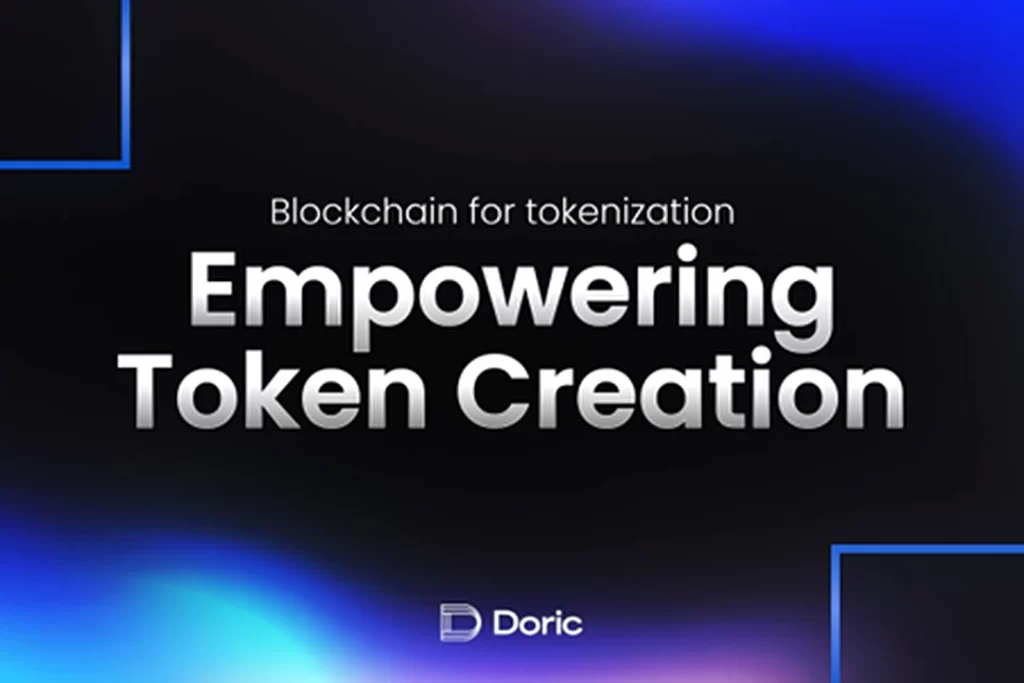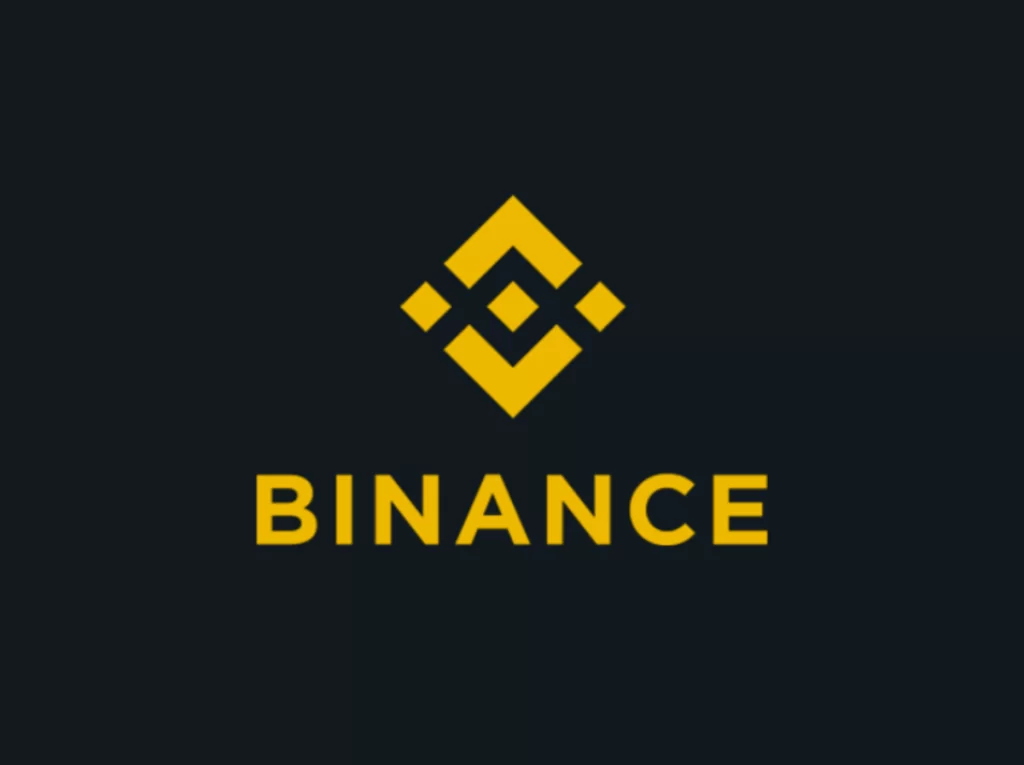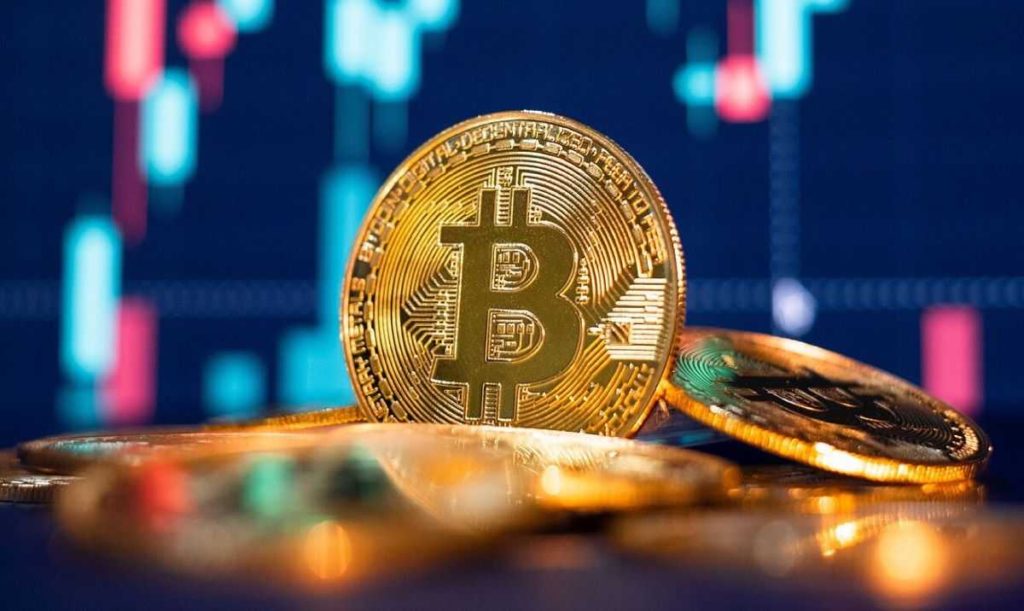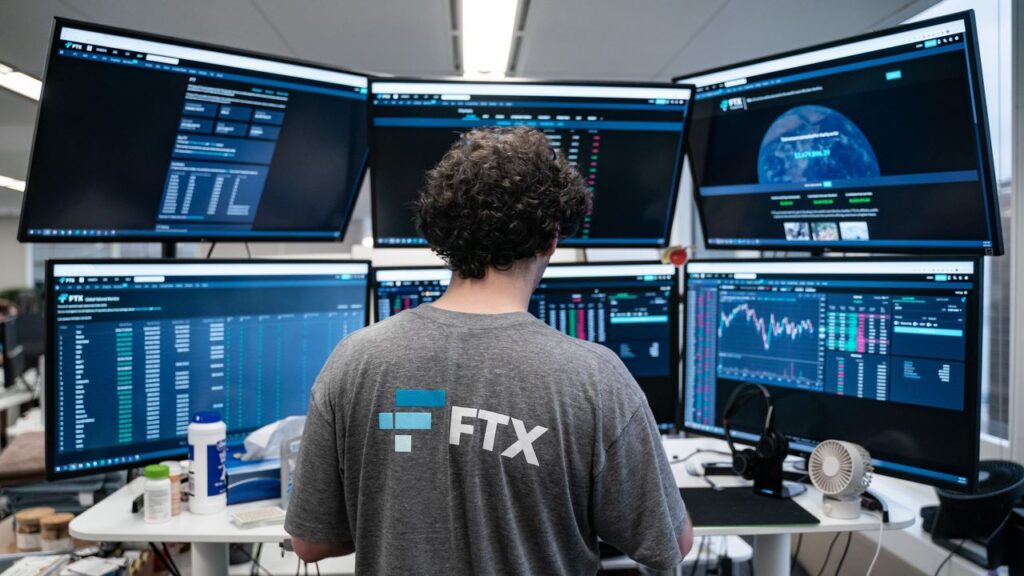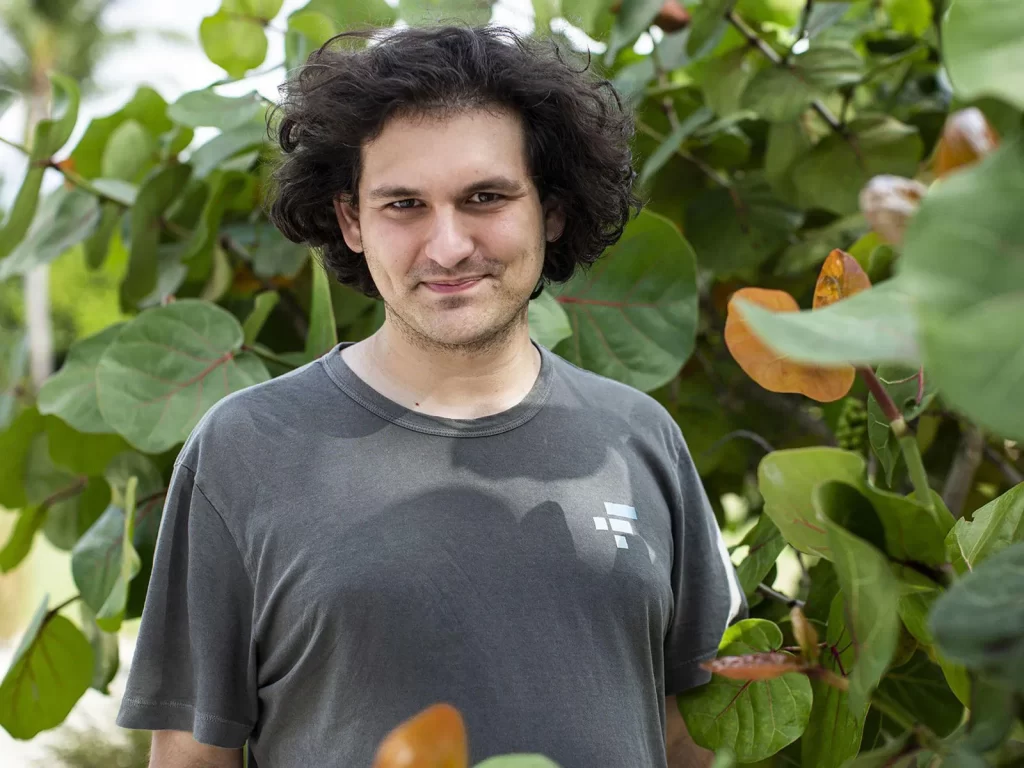The cryptocurrency market is not going through the best of times. Many analysts have predicted the next bull run and prepared to make money. This article will delve into the upcoming bull run specifics and highlight the BFG token as a secret weapon in a hunt for profit.
Countdown to Bull Run
The cryptocurrency market operates in cycles, alternating between bear and bull markets. Rising prices and increased investor enthusiasm characterize a bull run. On the contrary, a bear market is about stagnation and sad market situations. The question on everyone’s mind is: When will the next bull run happen?
Historically, Bitcoin halving events have resulted in significant price increases. Analysts predict the next Bitcoin halving date is April 25, 2024. It will occur at block 840,000 and reduce the mining reward to 3,125 BTC. This is why many crypto enthusiasts are excitedly preparing for a profitable period.
How to Earn During Bull Run?
Everyone can maximize their income during a bull run using a strategy and potentially profitable assets. Any wait for the market to come into full swing could mean missed opportunities. That’s why smart investors lay the groundwork ahead of a bull run. This strategy allows you to gain confidence and readiness for any changes.
The second rule of preparing for the bull run is choosing a currency with strong potential, such as BFG – the native token of BetFury. It is a trusted and universal currency with various utilities. The main strength of this token is an opportunity for passive earnings in BTC, ETH, and other top currencies. Considering the increase in all crypto prices during the bull run, BFG starts to play with special colors. Let’s examine why BFG is a hidden gem.
Sign up on BetFury, use promo code GEM, get BFG, and prepare for the Bull Run
The first 10 people to activate the promo code GEM on BetFury by 26th October with a $300 wager will receive 300 BFGs for free and start Staking for passive income.
Introducing BFG and BetFury Staking
Over three years, BFG strengthened a place in the hearts of many crypto enthusiasts. The currency has over 55,000 holders; the total income from BFG is about $4,000,000. Previously, BFG Mining was available until the total emission reached 5 billion tokens. After this, the currency became exclusive and gained prospects for development.
What makes BFG truly exceptional are the utilities it offers. Firstly, it’s iGaming because BFG is still about fun and profitable entertainment. Secondly, it’s Trading because the token is listed on top crypto exchanges (PancakeSwap, Biswap, etc.) and is available to purchase or sell. Finally, it’s Staking – one of the most engaging BFG utilities. It works on the principle of holding users’ currency on the network, for which they receive excellent rewards. It is implemented on the platform with up to 50% APY and an opportunity for daily withdrawals.
Having only 100 BFG, every user receives income in BFG tokens or five top currencies: USDT, ETH, BTC, BNB, and TRX. Therefore, with the maximum percentage per year, you will receive $1,500 from $1,000, and if you choose to get a reward in BFG, you earn even more! BetFury also offers an online Staking calculator that helps to calculate the amount of Staking payouts. These obvious benefits of BetFury Staking and other utilities shape the token as a great tool for the next bull run. Investing in BFG can prepare such a springboard for earning with crypto.
About BetFury
BetFury is an ecosystem of crypto products for entertainment and additional income. It has been developing on the market for over three years. BetFury offers 50+ cryptocurrencies for iGaming. There are over 8,000 Slots and Original games with one of the highest RTPs on the market (up to 99.02% RTP). Over 80 Sports allow crypto bets with odds better than the market average.
BetFury holds an Auction for the BFG token and provides 24/7 customer support. Moreover, the platform provides many profitable bonuses, like up to 25% Cashback, and an opportunity to win free Bitcoin in Fury Wheel.
Key Highlights:
- Blockchain for Tokenization: DORIC introduces an advanced platform for asset tokenization.
- Empowering Token Creation: DORIC’s free and secure services empower anyone to leverage the Ethereum Virtual Machine (EVM) protocol for token creation, breaking free from traditional limitations.
DORIC Blockchain, a pioneering force in the world of blockchain technology, is proud to announce the launch of its revolutionary platform. DORIC’s cutting-edge ecosystem is poised to redefine the landscape of asset tokenization and fractional ownership, ushering in a new era of transparent, efficient, and secure asset trading.
Leading the Path in Asset Tokenization
In an ever-evolving global economy, traditional investment approaches often struggle to keep pace. DORIC Blockchain has emerged as a solution to this challenge by offering a platform that empowers businesses and investors through asset tokenization. By dividing assets into tradable fractions, DORIC paves the way for businesses to unlock new opportunities and for investors to access previously untapped markets.
Doric: Where You Tokenize Your World
At Doric, our primary mission is to make asset tokenization accessible to everyone. You don’t need to be a financial guru or a big corporation to get in on the action. Imagine turning your home, your car, or even a piece of art into digital tokens that you can easily trade using USDT, a stablecoin backed by the US dollar. It’s like giving you the power to tokenize your world, making investments simpler and more democratic than ever before. Whether you’re a first-time investor or a seasoned pro, Doric empowers you to join the exciting world of asset tokenization, where opportunities are limitless, and financial inclusion knows no bounds.
Innovative Strategies for a New Age
DORIC Blockchain introduces innovative strategies that set it apart in the blockchain ecosystem: Asset Fractionalization: DORIC’s platform empowers asset owners to fractionalize their holdings, turning illiquid assets into liquid opportunities. This strategy increases the liquidity of assets, providing businesses with fresh avenues for growth.
Enterprise and Property Tokenization: the platform enables businesses to tokenize their enterprises and properties. This unlocks a world of possibilities by allowing for the creation of digital assets that can be traded globally.
A Comprehensive Ecosystem
DORIC’s ecosystem comprises a robust public blockchain featuring its native coin, the DRC, along with a suite of decentralized applications. This ecosystem is designed to support the development and management of enterprise solutions on the platform, making it a versatile tool for businesses looking to harness blockchain technology.
A Gateway to Asset Accessibility
DORIC Blockchain’s integrated network components make asset tokenization secure and transparent. Real estate and business asset classes are now accessible to a broader audience. Users can securely store their tokens on the blockchain or leverage the platform’s secure web wallet for seamless trading with peers.
A Visionary Perspective
Robert De Souza, Director of Operations at DORIC Blockchain, expressed the platform’s unique value proposition, saying, “The DORIC Ecosystem empowers businesses through fractionalization and investors through the creation of global digital assets. Blockchain has transformed asset management, and our mission is to build an ecosystem that adds substantial value for both investors and asset owners. We are at the forefront of redefining payment and security solutions while disrupting traditional business models with enhanced efficiency.”
A Solid Legal Framework
To ensure the platform’s compliance and functionality, the DORIC team has established partnerships with industry leaders to create a solid legal framework. This framework not only meets the needs of traditional banks but also resonates with global investors.
Next-Generation Smart Contracts
DORIC Blockchain harnesses the power of next-generation smart contracts, enabling businesses to deploy a wide range of applications focused on asset fractionalization, business expansion, and capital raising.
Exploring a New Blockchain World
Unlocking the capabilities of cutting-edge smart contracts, businesses gain the agility to deploy a variety of applications centered on asset fractionalization, corporate growth, and capital acquisition. To embark on an exciting journey into the world of innovative contracts, visit https://doric.network/
Binance’s ambitious Industry Recovery Initiative (IRI) intended to boost the crypto industry following the FTX collapse may have fallen short of its objectives, as a recent report indicates.
The IRI was launched in November 2022, with Binance committing $1 billion in its BUSD stablecoins.
However, by October 10, only $15 million had been spent, with the remaining $985 million being moved back to Binance’s corporate treasury.
Later, in March, Binance converted these funds into cryptocurrencies such as Bitcoin, attributing the decision to increasing regulatory concerns over stablecoins.
Besides Binance’s commitment, 18 other organizations, including Animoca Brands, Aptos Labs, Jump Crypto, and Polygon Ventures, added to the IRI, raising a collective $100 million by February 2023.
Although Binance stated that the IRI funded 14 projects within three months of its establishment, the details of these projects remain undisclosed.
The only publicized investment from Binance’s commitment was its purchase of the South Korean crypto exchange, Gopax.
READ MORE:Why Developers Should Seriously Consider Building on EOS EVM with v0.6.0 Release
However, based on Bloomberg’s research on wallet data, the total investment by the IRI since its inception is less than $30 million.
Notably, of the nine identifiable participants, only DWF Labs and Binance-backed Aptos utilized a portion of the funds they committed.
The current operational status of the IRI remains ambiguous, despite its online application form still being active on Google Docs. Binance has not provided a comment on the matter.
This discrepancy between the IRI’s proposed investments and actual contributions comes at a critical time.
The crypto sector is experiencing a significant decline in venture funding, dropping by as much as 70% from Q3 2022, as noted by the blockchain analytics firm, Messari.
In Q3 2023, funding volumes were a mere $2 billion, a drastic decrease from the $17 billion peak in Q1 2021.
Other Stories:
Prosecutors Challenge Defense Over FTX Funds in Bankman-Fried’s High-Profile Trial
Binance and OKX Adjust Operations in Response to U.K.’s New FinProm Regulations
EU Mulls Tighter Regulations on Major AI Systems, Mirroring Digital Services Act Approach
The EOS EVM v0.6.0 is almost live, bringing a number of interesting goodies to the platform’s new EVM environment, most notably natively bridged USDT.
Since its launch in April, the EOS EVM has seen a flurry of upgrades that make it a surprisingly unique EVM environment, which uses EOS’s underlying stack to create one of the fastest blockchain environments for EVM transactions.
The latest update is now bringing EOS USDT as a native token that can be bridged to the EOS EVM, as previously only EOS could be transferred trustlessly. The release also brings important technical updates to enhance interoperability with the native EOS environment.
Now, smart contracts on EOS can execute functions on the EVM, while smart contracts on the EVM can send messages to the native VM, which helps integrate the two deployments. EOS currently has $71M in TVL according to DefiLlama, a sizable figure providing a solid base to launch the next killer dApp on the EVM.
The EOS EVM’s unique properties
EOS is technologically highly advanced, providing an ultra low-latency smart contract platform built with C++. It was originally considered as the main “Ethereum killer” blockchain, but mismanagement by the original creators of EOS, Block.One, meant that the chain failed to take advantage of the later bull run.
Now, under the leadership of the community-established EOS Network Foundation, the ecosystem is finding new vigor — and its current focus is on bringing it up to speed with what happened in the land of smart contracts.
The EOS EVM is, unlike many other alternative L1 chains, not a fork of the Geth client, meaning that it doesn’t carry over much of its legacy code (which significantly reduces its performance). Instead, it is a smart contract on EOS that recreates an Ethereum client based on Erigon, a newer and much more efficient software.
EOS has a 1 second block time, making it easily one of the fastest blockchains supporting the EVM, and the one with the highest throughput for DEX swaps. With an efficient node implementation and low block times, the EOS EVM enables Solidity developers to build the kinds of things that were only possible on Solana, including order book DEXs and advanced derivatives.
How to build on EOS EVM
Like on any other EVM chain, developers can deploy contracts by simply connecting their favorite developer tools to the EOS EVM chainId, 17777. The documentation includes the full list of data such as RPC endpoints, network settings and block explorers.
For testnet tokens, a faucet is also readily available directly from the docs.
The EOS EVM is fully compatible with existing smart contracts, including some key cryptography precompiles that exist on Ethereum. Unlike complex rollups like zkSync, there is nearly no additional headache from switching to EOS.
The rest of the way is pretty much like building anywhere else, and deep dives into building Solidity contracts are easy to find.
The EOS Foundation heavily incentivizes developers
As a recently launched initiative, the EOS Network Foundation is keen to offer incentives to the right teams who build on EOS. With venture funding across the board hitting multi-year lows according to Messari, this can be a boon to ambitious teams who are struggling with funding elsewhere.
For example, the ENF is giving up to $50,000 for anyone deploying on the EOS EVM (pending some checks). Additional options include the EOS Network Ventures and Grant program, completing the circle of funding avenues.
Another cool feature from the last v0.5.0 update is the Yield+ program, a semi-automated network-wide liquidity mining program. Apps can receive extra yield to give to their users to incentivize activity, divided in multiple tiers based on EOS and USDT TVL.
Combined with a number of quality of life improvements, the EOS EVM is gearing up to become the dark horse this season as it continues to make critical updates to its technology stack. And as far as developer experiences go, its program seems very competitive at a time when most other networks are slowing down their spending.
Bitcoin maintained its position around $28,000 as of the Oct. 8 weekly close, with geopolitical tensions capturing the attention of traders.
Recent data from Cointelegraph Markets Pro and TradingView highlighted Bitcoin’s resilience against potential drops over the past weekend.
After briefly dipping to $27,000 on Oct. 6, positive US employment figures—contrasting with Federal Reserve policy changes—aided its recovery.
The main focus for traders in the coming week is the $28,000 resistance.
Skew, a notable trader, emphasized in his analysis on the low timeframe (LTF) of exchange order books that significant buying power is essential to transition the $28,000 from resistance to support.
“The market still perceives $28K as resistance. Breaking it would need substantial buying,” he mentioned to his X (formerly Twitter) followers.
Additionally, he observed perpetual contracts (perps) shorting each LTF bounce at $28,000.
Skew also pointed out Bitcoin’s response to the $28,000 level and the current 200-day moving average (MA) of $28,040 as less than ideal.
Another trader, Daan Crypto Trades, warned against betting on Bitcoin’s price drop, especially if a surge takes place.
READ MORE:Senior Republicans Push Biden Administration to Enhance Semiconductor Export Rules to China
He noted the significance of the $28,000 mark with the Daily/Weekly 200MA at the same position and expressed his hesitancy in shorting any upward deviations.
He further shared, “Historically, weekend breakouts at these points have been resilient against retractions.”
A provided chart showcased the final price for the past week’s CME Bitcoin futures, which could act as a pricing guide for the forthcoming week. Daan added, “The CME price is most effective in a fluctuating environment.
We’re in that scenario, but a strong upward move might change it, making me reluctant to short during a potential weekend surge.”
Additionally, recent events in Israel have raised discussions about geopolitical uncertainties possibly influencing Bitcoin’s pricing in the future.
Among the commentators is Michaël van de Poppe, CEO of MN Trading.
He anticipated a volatile week, suggesting that Bitcoin might approach $30K due to growing global uncertainty.
Van de Poppe had previously predicted Bitcoin surpassing $30,000 in October, a month traditionally favorable for Bitcoin.
Currently, Bitcoin is priced slightly below $28,000, marking a 3.5% increase month-to-date, based on CoinGlass data.
Other Stories:
FTX Co-Founder Testifies: Former CEO’s Alleged Misuse of User Funds
Why Do Over 1,6 Billion People Trust BetFury and BFG?
Elon Musk Faces Scrutiny Over Suspension of XRP Account Amidst SEC Investigation
Gary Wang, ex-chief technology officer of FTX, has testified in the ongoing trial of former FTX CEO Sam “SBF” Bankman-Fried.
The trial revolves around Bankman-Fried’s alleged misuse of FTX user funds in collaboration with Alameda Research, without obtaining users’ consent.
Wang, who appeared in a New York court on October 6, stated that Alameda’s account on FTX was the sole account permitted to trade beyond its available funds through an “allow negative” feature.
This feature, integrated in 2019, was reportedly on the directive of Bankman-Fried. Wang testified that the feature enabled Alameda to have a negative balance surpassing FTX’s 2020 revenue – $200 million compared to $150 million.
Wang revealed that despite Bankman-Fried’s public claims on the two entities’ relationship, he had granted Alameda a $65-billion credit line.
Further, Wang mentioned a meeting in the Bahamas office, where after highlighting Alameda’s skewed balances, Bankman-Fried instructed Alameda to return the borrowed amounts.
According to Wang’s testimony, the “special privileges” Alameda enjoyed on FTX were tied to the exchange’s FTX Token (FTT), which the company used for trades when its balance was negative.
Alameda also allegedly had the capability to directly withdraw funds from FTX.
On October 5, Wang confessed to his criminal involvement with Bankman-Fried and Caroline Ellison, the former Alameda CEO. He had previously admitted guilt in a fraud case in December 2022.
The CEO of the Crypto Council for Innovation, Sheila Warren, drew a parallel with the Elizabeth Holmes trial, suggesting the core issue isn’t about cryptocurrency but the alleged personal misdeeds of Bankman-Fried.
She commented on the ex-CEO’s downfall, anticipating further revelations of his self-interest.
Bankman-Fried’s trial is slated to continue until November, with both Ellison and Nishad Singh, ex-FTX engineering director, expected to testify against him.
Bankman-Fried remains incarcerated following a bail revocation by Judge Lewis Kaplan in August. His intention to testify remains uncertain.
Other Stories:
Binance Market Dominance Dips Amid Regulatory Hurdles and Fee Changes
Bitcoin Stabilizes Near $28,000: Whales, Resistance Levels, and Exchange Dynamics in Play
Crypto CEO’s Ex-Roommate Testifies About $8-Billion FTX Deficit Amid Fraud Allegations
Kazakhstan, the world’s third-largest Bitcoin mining hub in terms of hash rate, is facing a crisis in its crypto mining industry due to soaring energy costs.
This predicament has prompted eight prominent cryptocurrency mining firms, including BCD Company, TT TECH Limited, KZ Systems, AI Solutions, Green Power Solution, VerCom, and Kinur Invest, to compose an open letter addressed to President Kassym-Jomart Tokayev.
In their letter, these mining industry leaders highlight the severe distress faced by the Kazakh crypto mining sector due to exorbitant energy prices.
They reveal that all major players within the industry have already suspended their operations and are contemplating a complete withdrawal from Kazakhstan by year-end if the situation remains unchanged.
The executives express concerns that these high energy prices hinder the government’s efforts to regulate the broader cryptocurrency industry, particularly mining.
They attribute the problem to the government’s decision to impose taxes on energy consumption by crypto miners.
READ MORE:Friend.tech’s Decentralized Social Media Platform Surges in Revenue and User Growth
This decision has led Kazakhstan to lose its competitive edge among crypto mining giants such as the United States, Russia, and China, pushing the industry to the brink of extinction.
The letter underscores the urgent need for government intervention, warning that without swift action, the digital mining industry in Kazakhstan will vanish.
The taxation regime for digital mining was introduced on January 1, 2022, primarily targeting the electricity usage of mining entities.
Even at the highest tax rate, one kilowatt-hour of electricity in Kazakhstan costs miners approximately $0.067, significantly lower than the average of $0.12 per kWh in the United States.
According to government data, Kazakhstan collected approximately 3.07 billion tenges ($7 million) in tax revenues from crypto mining entities in 2022.
However, this revenue has come at the cost of pushing the industry to the brink of collapse.
In conclusion, Kazakhstan’s crypto mining industry, a global leader in hash rate, is teetering on the edge due to skyrocketing energy prices driven by tax policies.
Urgent government intervention is needed to ensure the survival of this vital sector, which has been a significant contributor to the country’s economy.
Other Stories:
Q3 2023 Records $700 Million in Digital Asset Losses, CertiK Report Reveals
Bitwise Asset Management Launches Ethereum Futures ETFs Amid Regulatory Uncertainty
Earnings on the BetFury continue to surprise many casino fans! The platform has received recognition from more than 1.6 billion people worldwide, and different utilities brought to users almost $4,000,000. So, let’s consider why investing in such unique tokens is worth it.
The Secret of Impressive Results
The answer is that BetFury is the quintessential cryptocurrency and online casino. Over the years, the platform has attracted the attention of not only professional players interested in quality entertainment but also investors. This is the case when the combination of two trending industries of our time came together into one platform.
Slots, Table games, Bingo, or Lotteries have random algorithms, which require the right approach and extraordinary luck. It’s important to improve money management, eliminate incorrect strategies, and use crypto for additional passive income. This will help stabilize all earnings and bring them to a new level. In this regard, the BFG token copes with this task perfectly because it has many useful utilities.
BFG Token Utilities
BFG has several excellent utilities that have attracted the interest of many experienced investors. Previously, Mining was available, but it has ended. Thus, the full BFG supply amounted to 5 billion tokens, and the currency became a limited resource. Together with a significant amount of circulation (over 3 billion tokens), this affected the token’s value. It was also influenced by over 45 monthly Burnings, which maintained the tokeconomy and the balance between holders and developers. The BetFury team has burned more than 1.6 billion tokens for over three years.
BetFury Staking up to 50% APY
In addition to the above utilities, bonus offers, and various events worth millions of dollars, BetFury Staking took the bulk of the fame. It is one of the most popular ways to make passive money in the crypto world. It works on the principle of holding users’ currency on the network, for which they receive excellent rewards. It is implemented on the platform with up to 50% APY and the possibility of daily withdrawals. With 100 BFG on your balance, you receive income in BFG tokens or five top currencies (USDT, ETH, BTC, BNB, and TRX).
BetFury also offers an online Staking calculator that helps you calculate your income.
The transparency of this system and the profit of passive income attracted the attention of many investors and users of the platform. Thanks to this, BetFury has more than 55,000 BFG holders and almost $4,000,000 in total earnings from this asset.
About BetFury
BetFury is an ecosystem of crypto products for entertainment and additional income. The iGaming platform provides over 50+ cryptocurrencies for playing. BetFury has over 8,000 Slots and In-house games with one of the highest RTPs on the market (up to 99.02% RTP). Over 80 Sports allow crypto bets with odds better than the market average. You can get crypto in Jackpots, Daily Tasks, Free Crypto Boxes, and win up to 1 BTC in Fury Wheel.
Along with huge events, BetFury offers profitable bonuses: Rakeback, FuryCharge, and Cashback up to 25%. The platform also has an elite VIP club for loyal users from Rank 10. All VIP Club members receive additional perks, early access to new games, and a personal VIP manager.
In conclusion, anyone can become an investor by playing their favorite casino games. Using BetFury Staking, you can earn crypto regardless of your gambling results. Play and invest wisely, and join the friendly community of BetFury users to find comrades in this difficult task!
Bitwise Asset Management has made significant moves in the world of cryptocurrency investment by revising its application for a spot Bitcoin (BTC) exchange-traded fund (ETF).
Additionally, the company has announced that trading for two Ethereum (ETH) futures ETFs will kick off on October 2nd, marking an important milestone in the evolving crypto landscape.
The two ETFs set to launch are the Bitwise Ethereum Strategy ETF and the Bitwise Bitcoin and Ether Equal Weight Strategy ETF.
These ETFs will provide investors with access to the Chicago Mercantile Exchange’s Ether futures market, opening up new avenues for diversification and trading opportunities.
Bitwise’s Chief Investment Officer, Matt Hougan, emphasized the unique potential of Ethereum in the crypto market.
He stated that Ethereum offers a more expansive portfolio opportunity compared to Bitcoin.
While some investors view Ethereum as an alternative investment, others see it as a conventional growth asset with a blend of characteristics from both categories.
Bitwise’s move into the Ethereum ETF space comes as several other companies await approval for their spot Bitcoin ETF applications from the United States Securities and Exchange Commission (SEC).
Notable contenders include BlackRock, Invesco, and Valkyrie.
READ MORE: New U.S. Bill Proposes Enhanced Oversight for Cryptocurrency Transactions
However, the SEC has delayed its decision-making process, partly due to the looming possibility of a U.S. government shutdown and the uncertainty surrounding the Grayscale lawsuit.
The Grayscale lawsuit pertains to the transformation of the Grayscale Bitcoin Trust (GBTC) into a Bitcoin ETF. A U.S. court’s decision on August 29th paved the way for potential approval of the Grayscale spot Bitcoin ETF by dismissing the SEC’s objections.
The outcome of this lawsuit could significantly influence the SEC’s stance on approving spot Bitcoin ETF applications.
In a related development, Bloomberg analyst James Seyffart has disclosed that nine Ethereum Futures ETFs are set to receive expedited approval from the SEC, with a launch date slated for Monday, October 2, 2023.
This signals a growing interest in Ethereum-based investment products and demonstrates the crypto market’s continued evolution.
In summary, Bitwise Asset Management’s revised ETF application and the upcoming launch of Ethereum futures ETFs mark significant developments in the crypto investment landscape.
As regulatory approvals and legal decisions unfold, the industry is poised for further growth and diversification.
Other Stories:
French Authorities Conduct Surprise Raid on Nvidia’s Offices Amid Antitrust Inquiry
NFT Artist Raises £114,000 at Edinburgh Charity Event to Support Cancer Treatment
Former FTX CEO, Sam “SBF” Bankman-Fried, will remain incarcerated until the commencement of his criminal trial on October 3rd, according to a federal judge’s order.
The decision came during a September 28th hearing held in the United States District Court for the Southern District of New York, where Judge Lewis Kaplan rebuffed a plea from SBF’s legal team, who had sought his temporary release for trial preparations.
This request had been pursued vigorously by Bankman-Fried’s defense since his bail was revoked on August 11th due to allegations of witness intimidation.
Notably, the matter had twice been appealed without success.
Judge Kaplan cited concerns about SBF potentially being a flight risk, especially if the trial’s outcome appeared unfavorable.
This assessment took into account SBF’s age and the potential prison sentence he might face.
READ MORE: Do Kwon Requests Extradition Denial Amidst SEC Investigation
Despite the denial of an early release, the judge did grant the former FTX CEO the opportunity to arrive at court early on specific days to consult with his legal team.
The countdown to Bankman-Fried’s trial has entered its final phase, and observers from both within and outside the crypto community eagerly anticipate revelations concerning alleged fraud at FTX and the testimony of former Alameda Research CEO, Caroline Ellison.
In a recent development on September 27th, Judge Kaplan approved some procedural motions, allowing SBF to wear a suit during the trial and permitting the use of an air-gapped laptop in the courtroom for note-taking.
The forthcoming trial on October 3rd will be the first of two legal proceedings that Bankman-Fried will face.
In this initial trial, he confronts seven charges related to the alleged misuse of customer funds in October.
A second trial, scheduled for March 2024, will involve five additional charges.
Throughout these legal battles, SBF has consistently pleaded not guilty to all counts, and the crypto world continues to closely follow these high-profile proceedings.
Other Stories:
Fornite Developer Cuts 16% of Workforce Amid Metaverse Revenue Shortfall
Chinese Consultant Fined $144,907 for Unauthorized VPN Use
Marathon Digital Mines Invalid Bitcoin Block in Experiment, Network Resilience Proves Robust




